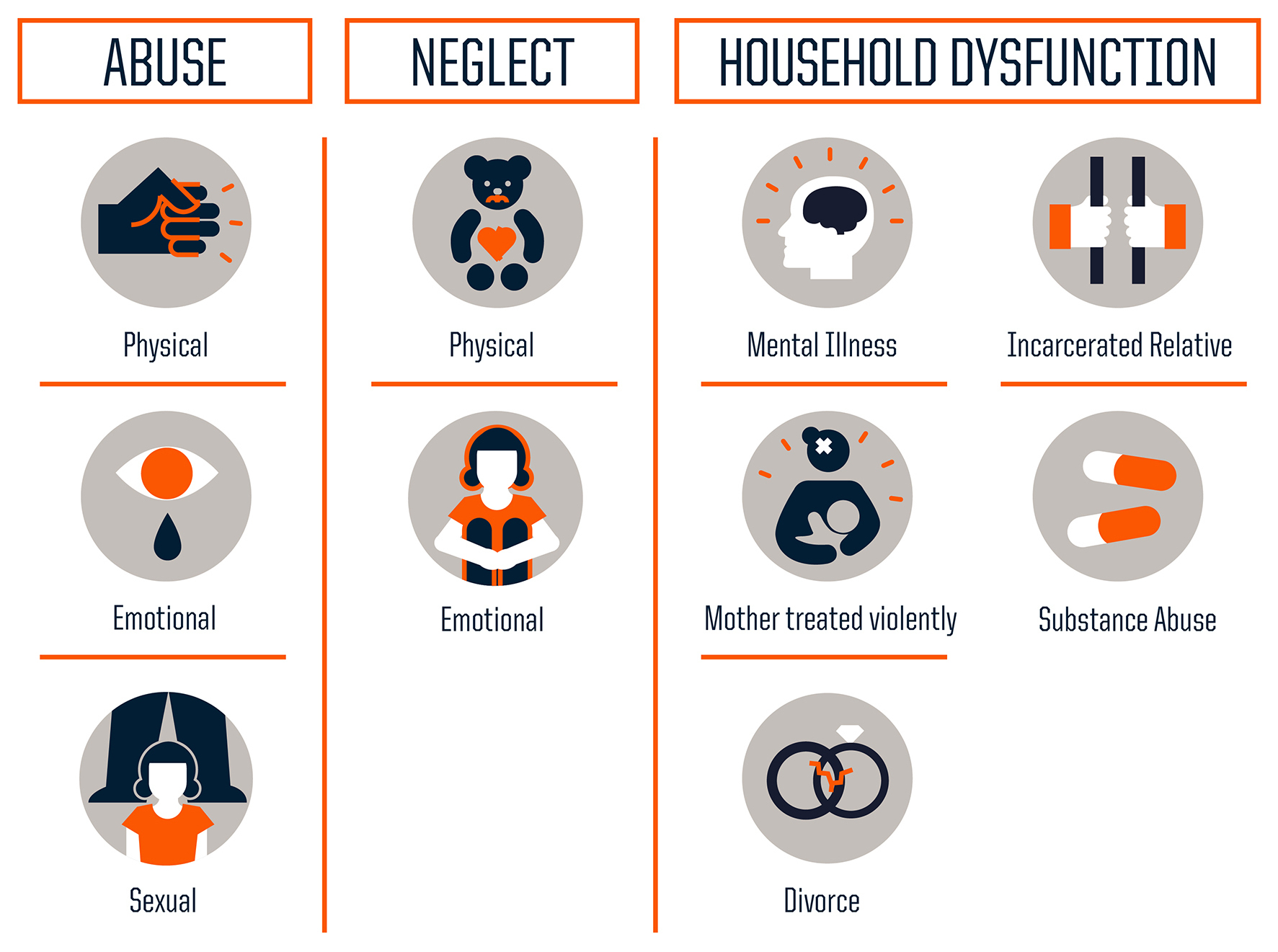PTSD: Sociocultural explanations
Sociocultural etiologies of PTSD
The sociocultural approach looks at the role of environmental factors in the onset of PTSD. This is a more holistic approach to understanding the disorder. Sociocultural researchers look at the role of protective and risk factors - in what is called a vulnerability model. In addition, the role of social identity theory will be explored.
Before completing the module below, please read the section of the textbook called the Sociocultural approach to PTSD. When reading this section, please make note of the following important concepts:
- Adverse childhood experiences [ACEs]
- Diathesis stress model
- Emic vs etic approaches to research
- Explanatory models
- Prospective vs retrospective research designs
- Risk vs protective factors
- Vulnerability models
The role of environmental factors
Please watch the following video with Nadine Burke Harris. You may have already seen this video if you are also studying the health option. If so, watch it again as a refresher of the concept of Adverse Childhood Experiences [ACEs].
When you have finished, read through the study by Felitti et al (1998) that Burke Harris discusses in the video.

Thinking critically
Try to answer the following questions on your own without looking at the answers. The answers provided are a way to check your own thinking and learning.
1. What would be the difficulty of applying Burke Harris's plan to give an ACE's inventory to all children coming in for treatment?
There are several potential difficulties. First, as she mentions in the video, a multi-disciplinary team is needed. If a child indicates that there is domestic violence at home or that they are being abused, then social services must assist to address the issue. The physician may know what is happening, but may not have any ability to change it. Another problem is that when a child goes to see a doctor, the parents are in the room. This may mean that children do not feel comfortable sharing such information - either because they are scared of losing their parents or fear of punishment. It may also be that child may be too young to read the questionnaire. Oral presentation of the questions may result in demand characteristics - or the questions may be framed as leading questions resulting in false or exaggerated information from the child.
2. Some have argued that Felitti's original 10 ACE's are culturally or class-biased. What are some examples of Adverse Childhood Experiences that may have been left off the list?
There is no mention of growing up in an unsafe neighborhood - for example, witnessing a crime or feeling threatened in your community (e.g. bullying or criminal gangs). In addition, there is nothing about a refugee's experience - for example, losing one's home, having to flee one's country, or having a parent arrested for political beliefs. Finally, there is nothing about "disasters" - for example, losing your home in a fire or hurricane.
3. Another criticism of using such a list with patients is that it doesn't take into account protective factors. What is meant by this statement?
It means that the data collected does not look at potential factors that could actually prevent high levels of stress, in spite of the adverse experience. These might include having a supportive family, a close friend, a stable financial situation, a good diet, or access to health care or counseling.
Linking ACEs to PTSD
LeardMann, Smith, and Ryan (2010) collected data from 8,391 male marine recruits prior to deployment to determine the number and severity of any adverse childhood experiences. The marines' health was then evaluated by using patient medical records almost a decade later after they had been on active deployment. The researchers found that those who reported adverse childhood experiences in more than one category were significantly more likely to be diagnosed with post-deployment PTSD. Specifically, childhood physical neglect was the variable most strongly associated with post-deployment PTSD.
Thinking about causality
Why the nature vs nurture debate is over
When I was studying psychology, the big debate was always whether behaviour was because of one's "nature" (genetic or other physical causes) or one's "nurture" (environmental and learned behaviour). Today, psychologists no longer have this debate. It is now understood that biological and environmental factors work together to produce behaviour.
Much of mental illness is an example of "domino causality." In simple linear causality, one thing directly makes another thing happen and the effects end there. But it is very common for effects to become causes of new events.
 What is domino causality?
What is domino causality?
- A sequential unfolding of effects over time
- An extended linear pattern that results in direct and indirect effects
- Typically has a clear beginning and a clear ending
- Can be branching where there is more than one effect of a cause (and these may go on to have multiple effects and so on.)
- Branching forms can be traced back to "stem" causes
- Allows researchers to predicted anticipated outcomes and find multiple potential places to intervene in order to prevent a negative outcome.
So, the question is - what is the link between Burke Harris and LeardMann, Smith, and Ryan (2010)? How is that someone who has experienced ACEs as a child will go on to develop PTSD as an adult? This is where we need to link the biology and the sociocultural factors.
Domino causality and PTSD
Michael Meaney (1988) found that in rats, stress in childhood led to hippocampal cell death and cognitive impairment in old age. More importantly, he found that this was not the result of damage to the hippocampus in the first few weeks of life, but a gradual process caused by an over-active HPA Axis. How did that happen?
Mother rats spend a lot of time licking, grooming, and nursing their pups. Highly nurtured rat pups tend to grow up to be calm adults, while rat pups who receive little nurturing tend to grow up to be anxious. This makes sense from an evolutionary point of view. If the rats do not have a parent to take care of them, they need to be ready to defend themselves against predators and cannot simply trust that mom will take care of everything!
This is an example of epigenetics. The grooming of the baby rats causes the GR gene to be expressed. This gene regulates glucocorticoid receptor sites - that is, it helps to regulate the stress response. When rats are not groomed, this gene is not turned on, leading to a more sensitive HPA axis.
What would this domino causality potentially look like?
 ACE > stress > gene expression > HPA axis dysfunction > new trauma > inability to regulate the stress response leads to PTSD
ACE > stress > gene expression > HPA axis dysfunction > new trauma > inability to regulate the stress response leads to PTSD
In many studies of PTSD, we see that there are factors that exist prior to the trauma that are risk factors for the development of PTSD. If you have an overactive HPA axis, this means that those stress hormones are causing problems for your overall health including, potentially, PTSD.
Vulnerability models
The role of ACEs in PTSD is just one example of a variable in one is referred to as vulnerability models of PTSD. In other words, when the risk factors for the disorder are higher than the protective factors, then a person is more likely to develop PTSD after a traumatic event. The following presentation reviews the textbook explanation of vulnerability models.
The role of culture
Read through the following presentation on the role of culture. This topic will be discussed in more detail in the "prevalence" part of this module. For now, read through the presentation carefully and be able to explain the two key terms: explanatory models and emic approaches.
Checking for understanding
You have been asked to write an essay that would evaluate the sociocultural approach to the explanation of one disorder. For each of the following evaluation points, explain what it means with regard to theory or research in the sociocultural approach.
The sociocultural approach takes a more holistic approach to explaining PTSD than other approaches.
Much of the research done in the sociocultural approach has high ecological validity, but this can also be problematic.
In the sociocultural approach, there are some problems with construct validity.
Cross-cultural research is problematic in explaining the origins of PTSD.
Sociocultural theories tend to be descriptive rather than explanatory in nature.
Continue to Research methods and ethics

 IB Docs (2) Team
IB Docs (2) Team

